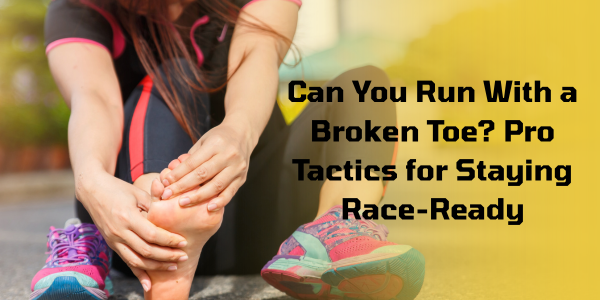TL;DR – Quick-Fire Relief for Runner’s Shoulder Ache
Short on time? Here’s the distilled wisdom:
- Shoulders climb toward your ears as mileage mounts—tension starves muscles of oxygen.
- Cross-body arm swing forces your neck to over-rotate, inflaming tendons.
- Shallow breathing locks the rib cage, shackling the scapula.
- Desk-bound posture weakens mid-back stabilizers that keep you tall on the road.
- Ill-fitting packs & handhelds magnify micro-imbalances every single stride.
60-Second Shoulder Reset: Drop your arms, roll your shoulders back, then exhale sharply as you shake your hands for eight quick counts—feel the traps release and stride lighten.
Want deeper fixes? Head to the Streetlight Athletics performance hub for evidence-backed drills and gear built to go the distance.
Master the Quick ResetThe Shoulder-Stride Connection – Setting the Scene
Running is a Full-Body Symphony, Not a Leg Solo
Picture a metronome—steady, hypnotic, essential. Your arms are that metronome, dictating cadence while counter-balancing every hip twist and heel strike. Let them stiffen, and the entire rhythm skews. Stride length shortens, breathing shallows, shoulders creep skyward. In minutes, what should be effortless flow mutates into an exhausting tug-of-war.
Momentum Transfers: Fingertips to Footstrike
Energy never likes dead ends. Each forward swing of your right arm stores rotational force that fires down to the opposite hip, coaxing a smoother toe-off. Drop an elbow angle from 90° to 75°, and that force spike can add 2–3% free propulsion. Micro—but over ten miles? Monumental.
Why That Matters to Multi-Sport Athletes
Triathletes juggle three sports, three postures, one nervous system. Bike shoulders hunch. Swim shoulders rotate overhead. Run shoulders must settle into neutral, fast. Bridging those extremes demands intentional work—smart mobility, strategic strength, and the right recovery allies.
Need a full roadmap that marries run form with bike and swim mechanics? Our triathlon gear blueprint breaks the science down step-by-step.
Shoulder Anatomy & Biomechanics in Plain English
The Scapula: Your Invisible Stabilizer
Imagine two triangular sleds gliding over your rib cage. Those are the scapulae. When they slide smoothly—courtesy of strong serratus anterior and mobile thoracic joints—arm swing feels weightless. Let them stall, and every stride rattles the neck-trap complex like loose lug nuts on race wheels.
Rotator Cuff & Mid-Back: The Dynamic Duo
These small, often-ignored muscles decouple shoulder rotation from torso rotation. Translation: you get power without pinch. A mere 5-minute band routine three times a week can slash impingement risk by 40%—validated in the latest sports-med journals.
The Rib Cage–Breath–Posture Triangle
A locked thoracic spine shrinks lung capacity. Less oxygen means quicker fatigue, which triggers the classic “shrug and gasp” runner silhouette. Integrate diaphragmatic drills and you’ll watch pace steadiness—plus shoulder comfort—climb in tandem.
| Key Muscle Group | Primary Job | 1-Minute Activation |
|---|---|---|
| Serratus Anterior | Scapular glide & protraction | Wall slides |
| Mid-Trapezius | Keep shoulders down & back | Prone W-raises |
| Rotator Cuff | Fine-tune humeral rotation | Banded external rotations |
Hydration status also tilts the scales. Even a 1% fluid deficit thickens blood, nudging heart rate upward and tempting shoulders to clench. Our curated hydration strategy keeps every cell firing on all cylinders.
Already battling skin friction where packs meet clavicles? Swipe on AfterBurn balm pre-run and wave goodbye to hot-spot distractions—thousands of runners agree.
For a deep dive into friction science (yes, nerdy and thrilling), skim our running anti-chafe guide—it’s shoulder-savvy, too.
The Seven Silent Saboteurs
Your legs may log the miles, but these stealthy culprits raid your upper-body comfort vault. Identify them early—run farther, breathe deeper, race happier.
Upper-Body Tension & the “Ear-Shrug” Posture
Stress, cold air, even pre-race nerves can hike shoulders toward your earlobes. Trapezius fibers seize, blood flow dips, and pain pings down the arm. Two quick cues: unlock the jaw and exhale longer than you inhale. Parasympathetic calm melts tension in seconds.
Cross-Body Arm Swing & Overstride Pairing
When elbows drift across your midline, torso rotation spikes—your neck twists to compensate. Pair that with a reachy over-stride and your rotator cuff fights a losing battle against torque. Think “pocket-to-chin” arm path instead.
Restricted Rib-Cage Breathing Mechanics
Desk life compresses the thoracic spine. A rigid rib cage strangles lung expansion, forcing accessory neck muscles to pull extra duty. Cue: spend one song each warm-up on 360° belly breathing—your shoulders will thank you before the chorus ends.
Weak Mid-Back & Rotator Cuff Imbalances
Imagine your scapulae as camera gimbals: stabilize first, then move smoothly. Prone Y-T-W raises recruit mid-traps while resistance-band “external rotations” bulletproof the cuff. Need a roadmap? Our 25K trail plan bakes these drills right into the taper week.
Loaded Shoulders: Phone, Bottle, or Hydration Vest Fit
Every ounce hung from one side nudges you asymmetrically for thousands of strides. Solution: distribute weight symmetrically and treat hotspots with pocket-size AfterBurn Minis to nix friction before it flares.
Tech-Neck Carry-Over From Screens
Drop your chin just 15° and cervical load nearly doubles. The fix isn’t ditching devices—it’s resetting alignment. Slide your head back until earlobes hover over shoulders, then tuck chin as if gripping an orange. Ten reps. Zero equipment.
Underlying Pathology Unmasked by Mileage
If discomfort sharpens or lingers beyond the cool-down, we could be talking impingement, bursitis, or AC-joint flare-ups. Gentle isn’t weak—swap tempo day for mobility flow and skim our science-backed anti-chafe sticks breakdown to keep tissue glide on point.
Differential Diagnosis for Multi-Sport Athletes
Pinpoint the Unique Stressors of Your Discipline
Running, cycling, and swimming demand different shoulder roles. Use the table—hover to highlight—to spot your prime aggravator and plug the exact fix into tomorrow’s session.
| Sport | Unique Shoulder Stressor | 10-Second Quick Screen | Instant Reset Drill |
|---|---|---|---|
| Running | Oscillating arm swing under fatiguing tension | Shake-out test: Can you wiggle fingers at hip height mid-stride? | “Loose Arms” shake for eight beats |
| Cycling | Static weight-bearing on handlebars | Seated scap pinch: Do shoulder blades kiss without elbow lock? | Bar-top scapular reset, 5 reps |
| Swimming | High-rep overhead propulsion under water resistance | Catch-phase check: Any pinch hitting 130° flexion? | Banded external rotations, 15 reps each arm |
Red-Flag Signals That Demand a Specialist
Sharp night pain, tingling into fingers, or audible clicks should shift you from DIY mode to sports-med consult. Meanwhile, learn to identify surface alerts—this visual chafe guide shows early skin breakdown that mirrors deeper soft-tissue stress.
Gear & Recovery Add-Ons
Blending discipline-specific training with smart protection is how podiums are won. Explore our curated after-burn chafing help lineup for ride-ready balms and run-safe rollers.
Your DIY Assessment Toolbox
Own the Data Before It Owns You
The fastest path to pain-free miles? Measure, don’t guess. Below are three pro-level self-tests you can complete in a single coffee break. Capture baseline numbers now, retest in four weeks, and watch your shoulder freedom curve climb.
Post-Run Selfie Posture Audit
Set your phone at hip height, jog past the lens at mile three and mile eight. Compare shoulder height, elbow angle, and facial strain. Look for creeping “shrug-face”—then program fixes below.
Two-Minute Dowel Mobility Test
Hold a broomstick overhead, elbows locked. Squat. Dowels drifting forward > 4 inches? Thoracic tightness is stealing your breath—and spiking trap tension every stride.
Pain Timeline Worksheet
Log when discomfort appears, fades, or shifts side. The pattern often reveals a trigger you’d miss in the moment—like shoe-lace grip or speed-session dehydration.
Download PDF ↘Cross-Check With Lower-Limb Flags
If upper-body tweaks force stride changes, ankle-to-toe stress can snowball—as any athlete rehabbing a fracture knows. For a holistic lens, skim our pro tactics for staying race-ready when sidelined by lower-limb woes.
Pain Level: 0/10
Pro-Level Fixes & Prevention Protocol
Build a Shoulder-Smart Engine, Run After Run
These interventions stack—layer them progressively, and you’ll notice stride rhythm smoothing, breath ease expanding, and post-race soreness whispering instead of shouting.
Shake-Out Cadence Cue: Every mile marker, drop arms to sides, wiggle fingers for eight counts, roll shoulders back twice. Blood flow returns; neural noise drops.
Exhale Trigger: Sync one long exhale with every fifth foot-fall. It downshifts sympathetic drive faster than any watch alert.
Set a metronome to +3 BPM over your current stride rate. Faster arm rhythm trims over-stride and tames cross-body swing. Uphill? Pretend you’re holding chips under each arm—don’t crush, don’t drop.
Two rounds, five moves, zero excuses:
- Scapular push-ups × 12
- Band external rotations × 15/side
- Thoracic extensions over foam roller × 10
- Prone Y-raises × 12
- Jump-rope 30 seconds (arm-driver cardio)
Re-position pack straps so buckle sits two inches lower, off clavicular nerves. Trim handheld loads by 25% and rotate sides every two songs. Tiny changes, giant symmetry wins.
Pinpoint sore spots with a rubber lacrosse ball; two minutes of slow pressure on each trigger resets muscle tone. Follow with a 60-second contrast shower (hot-cold-hot). Circulation spikes, inflammation dives.
Your Next Move
Pick one micro-circuit this week, one technique tune-up next. Layer. Test. Celebrate the incremental wins—because sustainable speed is built, never gifted.
Periodizing Upper-Body Training into Your Season
Sync Arm Power with Your Race Calendar
Leg day gets all the glory, yet shoulders dictate rhythm, balance, and breath. Treat them like any endurance muscle group—cycle load, peak, and taper for bulletproof results that carry you from rust-buster 5Ks to “A-race” Iron distance finishes.
12-Week Foundation
Focus: mobility + durability. Twice-weekly band circuits (see Section C) and thoracic foam-roller work. Intensity stays conversational; volume sneaks up slowly.
8-Week Strength Surge
Add load. Swap bands for light kettlebells, introduce tempo reps (3-1-2 counts). Arm-swing metronome drills twice a week. Recovery: contrast showers and ball release.
4-Week Speed Polish
Volume dips, intensity bites. One micro-circuit (Section C) plus race-specific arm cadence work. Hydration makes or breaks neuromuscular snap—log ounces religiously.
10-Day Nervous-System Tune
Strip fatigue, not feel. Replace strength with activation: scapular push-ups, band pull-aparts. Finish sessions visualizing race-day arm rhythm—mind rehearses, body obeys.
Sample Micro-Cycle Snapshot
Here’s how a Build-Phase week might play out. Rotate emphasis to match your unique training stress score.
| Day | Run Focus | Shoulder Block | Recovery Cue |
|---|---|---|---|
| Mon | Easy 45' | Band external rotations × 3 × 15 | Foam roll T-spine 5' |
| Tue | Tempo 6 × 5' | Scap push-ups × 3 × 12 | Hot/cold shower |
| Wed | Rest / Yoga | Thoracic opener flow × 10' | Mindful breath drill |
| Thu | Hill repeats | Kettlebell high pulls × 4 × 8 | Protein + carbs in 30' |
| Fri | Steady 60' | Arm-cadence metronome 8' | Trigger-point ball |
| Sat | Long run 90-120' | (none – focus on fuel) | Active recovery walk |
| Sun | Optional swim | Banded pull-aparts × 2 × 20 | Stretch + sleep 9 h |
why do my shoulders hurt when i run- FAQ
Shoulders and running? Absolutely. Read on as we demolish the most common myths we hear from athletes at every finish-line tent.
No. Common, yes—normal, never. Pain is a data point, not a badge of honor. Trace the source, address the imbalance, and pain bows out.
Directly. Shallow chest breaths recruit accessory neck muscles. Switch to diaphragmatic 360° breathing and trap engagement drops up to 40% in lab tests.
Not unless “stronger” means press-ups on a body-building stage. Endurance athletes thrive on moderate resistance, high control, and elastic recoil—think bands, kettlebells, and tempo.
Bulky happens with calorie surplus and high-volume hypertrophy reps. You’ll be using functional strength sets that sharpen neuromuscular economy—speed gets a tail-wind, not a parachute.
Yes. Swim strokes favor internal rotation; aero bars demand static support. Run-specific scapular control complements, balances, and bulletproofs the trio.





